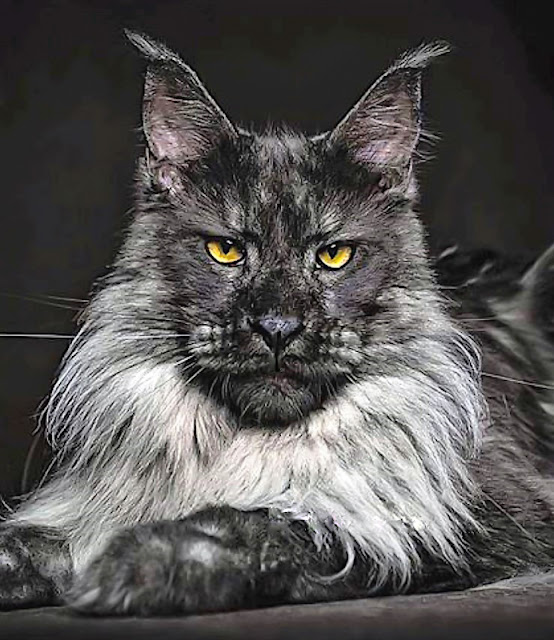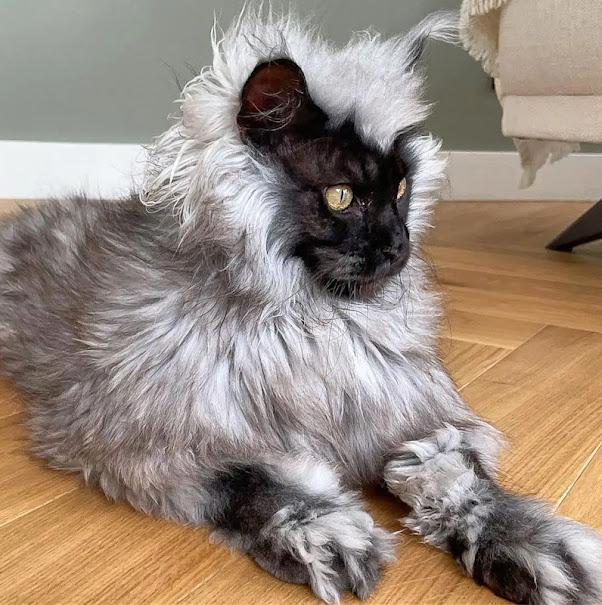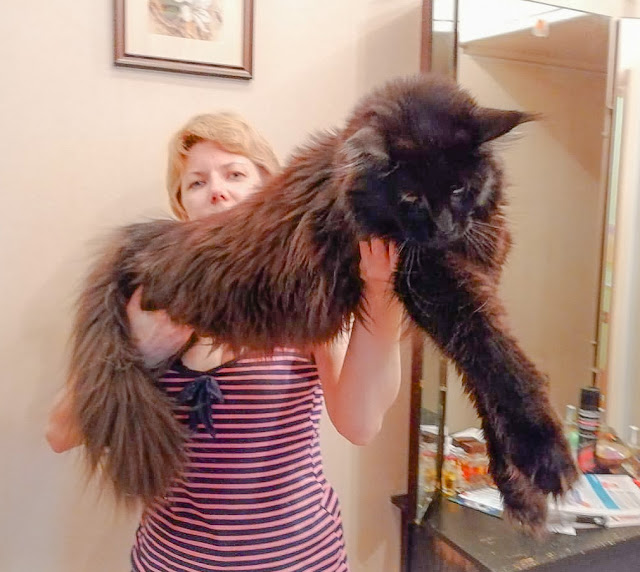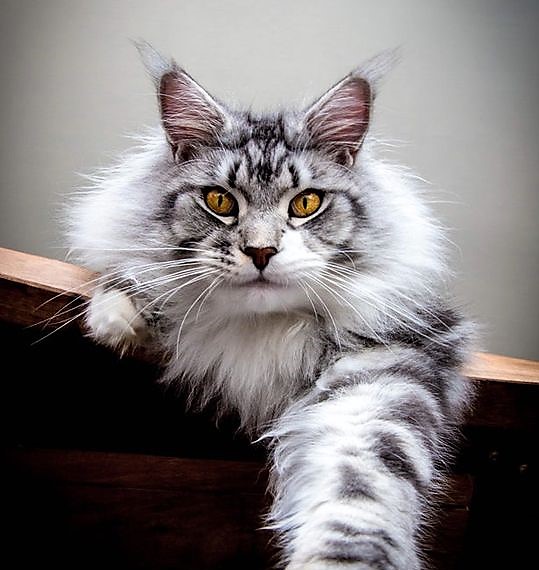Why do Maine Coons have extra toes?
There are several issues to discuss when responding to the question in the title. It appears that some people think that all Maine Coon cats have extra toes. This is incorrect.
 |
| Huge white polydactyl Maine Coon. Image: Pinterest. |
Not all Maine Coons are polydactyl
Sarah Hartwell in her website is one of the few providers of information on polydactylism in Maine Coon cats to state that "historically, the polydactyl made up 40% of the original unregistered Maine Coon population".
Note that she says "unregistered". These are Maine Coon cats which were not registered to a cat association. I take that to mean that these were not officially Maine Coons and perhaps she is referring to the Maine Coon before they became a purebred, pedigree cat (see below as well).
Falling percentage
It's quite a high percentage which has been dramatically reduced since the Maine Coons became a registered purebred cat because, for example, the Cat Fanciers' Association does not recognise polydactyl Maine Coons and therefore the breeders selectively bred this orthopaedic condition out of their cats.
So, the percentage today of Maine Coon cats which are polydactyl is going to be quite small I suspect perhaps at around 10 or 20%. That answers the question partly because it implies that all Maine Coon cats are polydactyl and they are not. It is quite a small percentage.
Cause
The second point to bring up is that this is a condition which is caused by an autosomal dominant gene which I guess mutated randomly and spontaneously causing this condition. Because it's a dominant genetic mutation it can easily be eliminated through selective breeding by breeding from non-polydactyl Maine Coons. That's how the percentage of polydactyl Maine Coons has been reduced as mentioned.
Forepaws
Another point which comes to mind and which should be mentioned is that the hind feet are rarely affected by this condition and they are only affected when the front feet are also affected. So polydactylism, when present, normally only affects the front feet of Maine Coon cats and rarely other cats including non-purebred cats.
Variable
And it's very variable in its effect. What I mean is the cat could have one extra toe on each paw or more. There is actually a world record polydactyl cat based on the extreme number of extra toes that they have. You can read about it by clicking on this link.
Robinson's
Sometimes a cat may have a different number of toes on each of their front paws. The expert on cat genetics was the late Roy Robinson. He wrote the first edition of "Genetics for Cat Breeders". It's now called "Genetics for Cat Breeders and Veterinarians".
I will quote from the book:
"This phenomenon has been noted as early as 1868, if not earlier, and on many occasions since that date. There is a considerable variation from animal to animal in the number of extra toes and how perfectly formed they may be."
Interestingly, that is the time when Maine Coon cats were unregistered barn cats but were being entered into informal cat shows in the state of Maine and they were turned into show cats not that many years afterwards.
He writes this under "genetic anomalies". He also says that "at the moment, only one polydactyly gene is recognised which is symbolised by Pd."
Generally, a benign condition
Generally, polydactylism is a benign condition meaning that the only congenital anomaly is the extra toes and there are no health issues associated with this genetic mutation. There is one example of where there are health issues but it is very rare as I understand it and therefore, I won't mention it further.










Comments
Post a Comment
Please share your Maine Coon experiences.